Families of Wrongfully Detained Celebrate 7 Newly Freed
By • October 17, 2022 0 1777
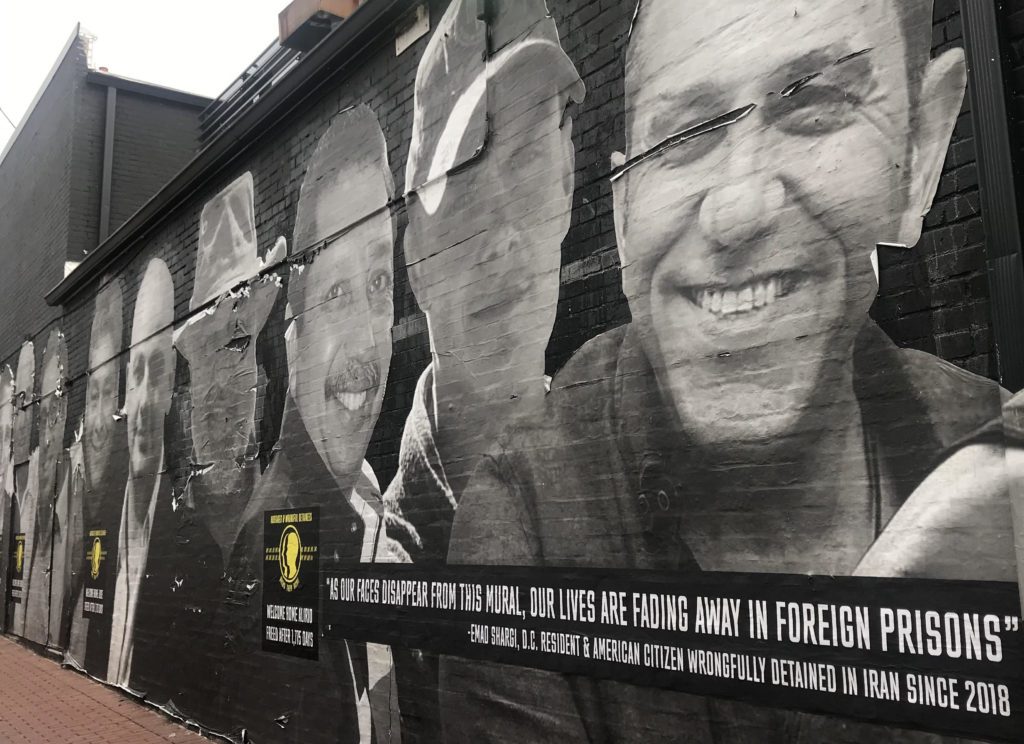
It was another tear-jerker event Oct. 15 in a Georgetown alley off M Street, between 31st Street and Wisconsin Avenue NW, at a temporary art exhibit of 18 somewhat fuzzy larger-than-life head shots, affixed with wheat paste onto a brick wall July 20. That inaugural event caused even international press corps members to wipe their eyes. Now, the 18 photographs of Americans wrongfully detained abroad (many by Venezuela and Russia) for an average of almost five years, are starting to peal — a sign that time is passing and the detainees are experiencing deteriorating health, according to organizers. But this Saturday the tears that sprang up were tears of partial joy and hope.
In the past week, seven detainees — whose peeling photos are on that wall — were released.
The organizers of the “Bring Our Families Home” campaign, an action group of the Jim Foley Foundation, printed personalized “Welcome Home (first name) Freed After (number – all over 1,000) Days”. Family members and hostage negotiators took part in attaching the freed notifications below the fading images.
“There is still so much work to do,” said Ambassador Roger Carstens, the Presidential Envoy for Hostage Affairs at the State Department, and who is regarded as a champion by many of the families. Carsten has been allowed to visit many of the detainees.
“There are still 54 wrongfully detained Americans that we are actively trying to get freed,” the group said.
In fact, a new face was pasted to the wall that afternoon – Eyvin Hernandez, who has been detained for more than five months in Venezuela. His image stands next to that of Olympic gold medalist and Women’s National Basketball Association player Brittney Griner, held now for almost eight months, convicted for drug possession and facing years in a Russian prison. It is agreed that most were taken as political negotiating chips.
“But the issue is now visible and bringing the detainees home is getting increased bipartisan support,” Cynthia Loertscher, Director of Research, Hostage Advocacy and Governmental Affairs for the James W. Foley Legacy Foundation told The Georgetowner. “Three agencies are now fully involved and recognized that weren’t just a few years ago, including Ambassador Carsten, the Hostage Recovery Fusion Cell an interagency grouping currently associated with the FBI and the Hostage Response Group.”
All these were made possible by the Levinson Act that created 11 criteria for “wrongfully detained persons” by foreign governments — as opposed to hostages of (assumably non-governmental) terrorist organizations. Codifying the detainees gave government powers the legitimacy to pursuit diplomatic and other governmental means to secure their release.
“Seeing these faces on this wall along with our father and knowing some are being released has given us hope,” Henry Hernandez told the crowd.
“These are the last photographs many of the families have of their loved ones,” said artist Isaac Campbell on July 20, as he fought back tears during the presentation that he had put together. “It was my honor that the families let me use them for this exhibition to bring attention to them, to try to make sure they are not forgotten, to give the families some hope that people are working together for their release.”
Indeed, there is much to do once they are released, Loertscher said. “Much of the remaining work will be to help the former detainees and families deal with their traumas and come back to a normal life”
“But, today, let us celebrate our big win,” Carstens concluded.
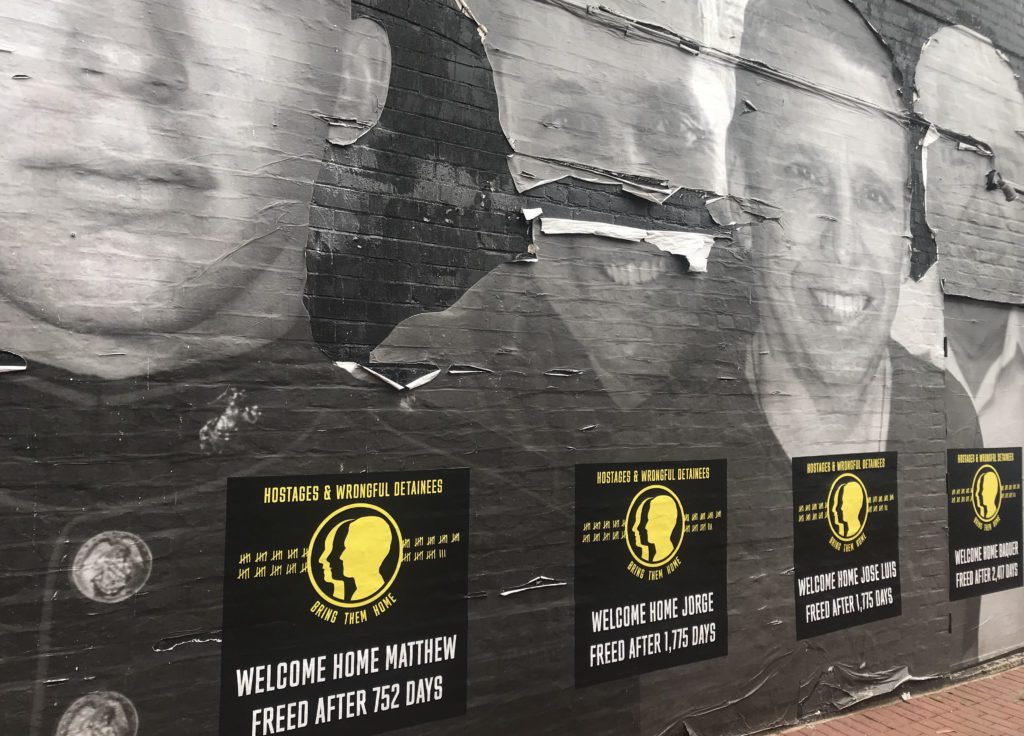
Some of the images now have fresh markers to show that the person has been freed. Georgetowner photo.
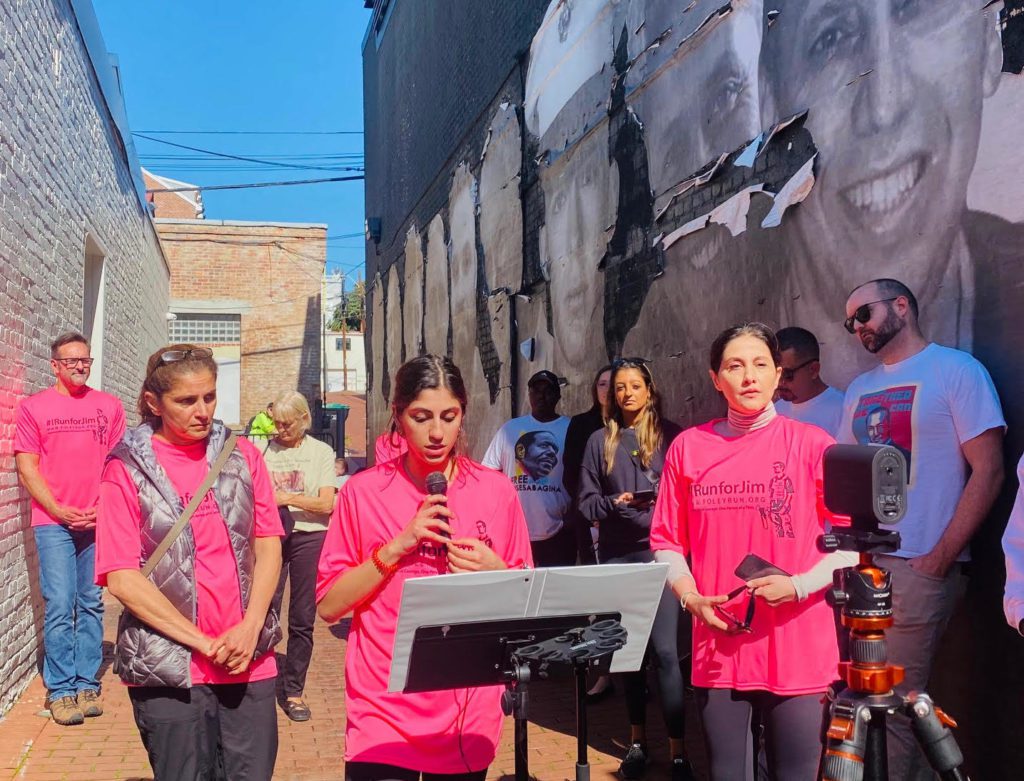
The families of those detained spoke of their loved ones and called for their immediate release. Photo by Peggy Sands.
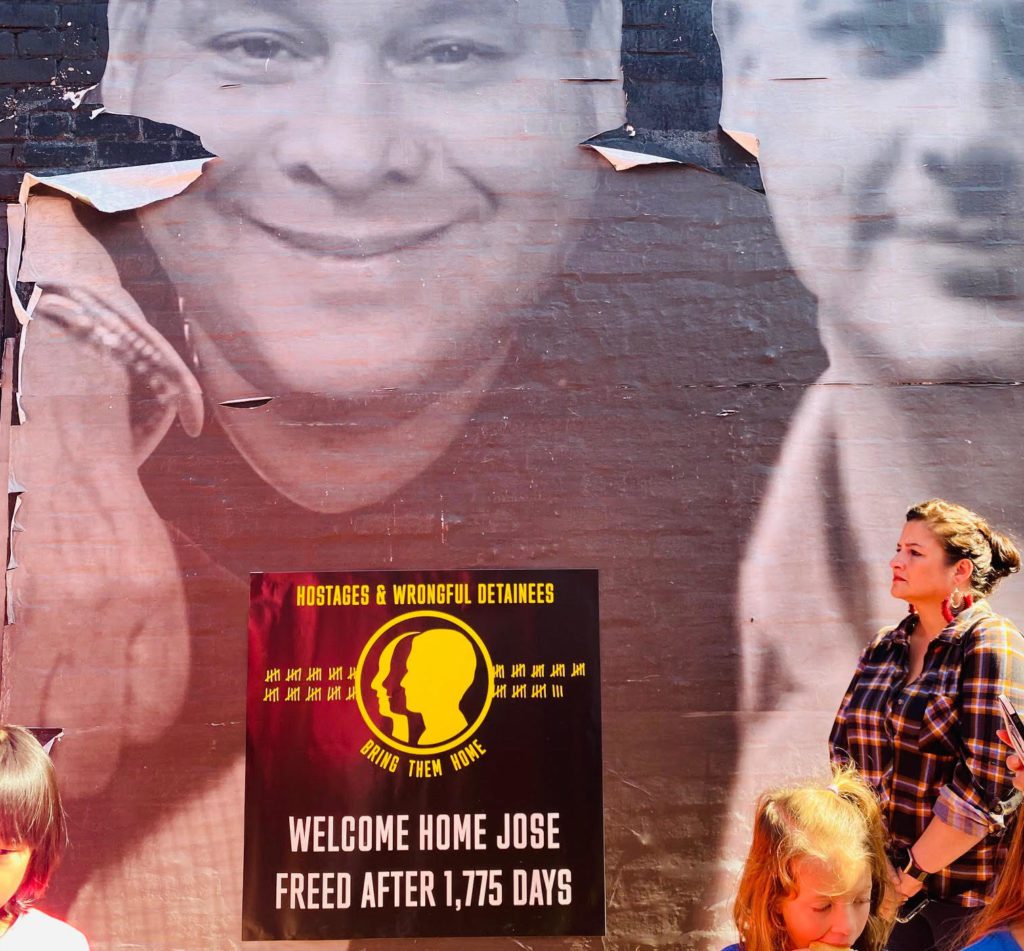
A new poster on the detainee mural indicate that Jose Luis Pereira has been released by Venezuela. Photo by Peggy Sands.
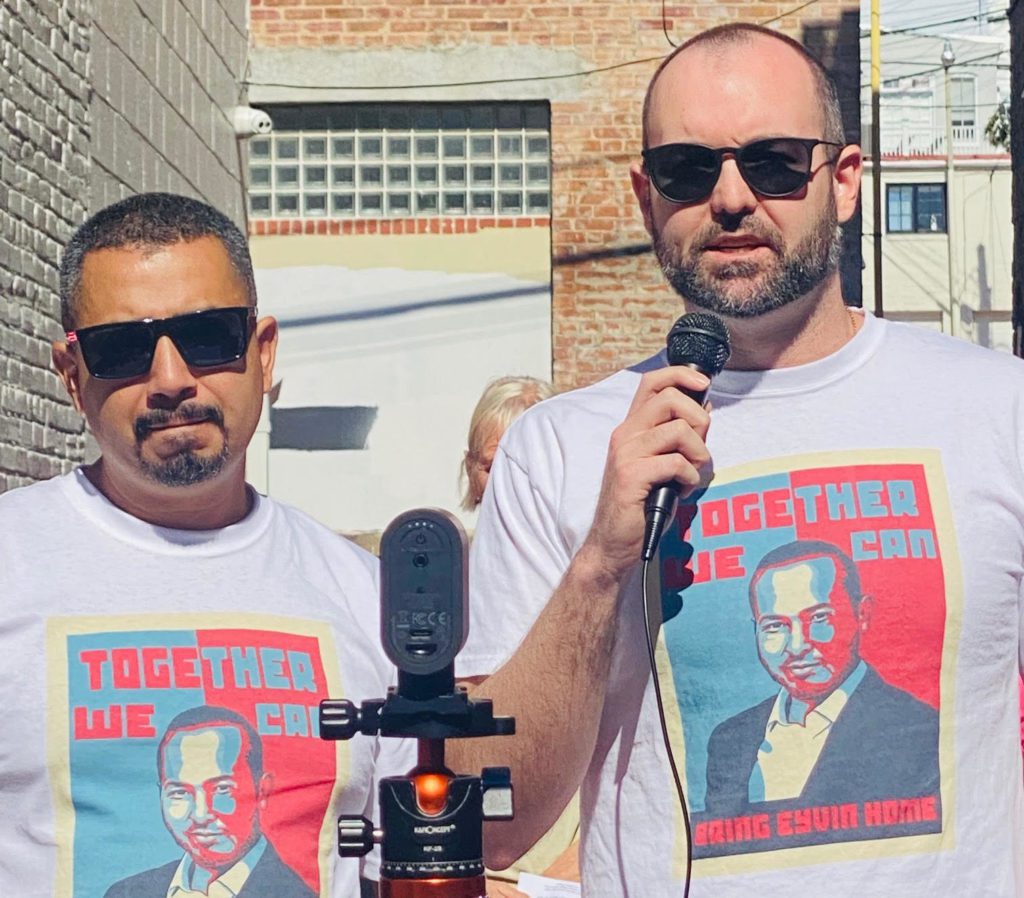
Drew Havens and Henry Hernandez spoke out for Eyvin Hernandez, a Los Angeles public defender, imprisoned by Venezuela. Photo by Peggy Sands.

